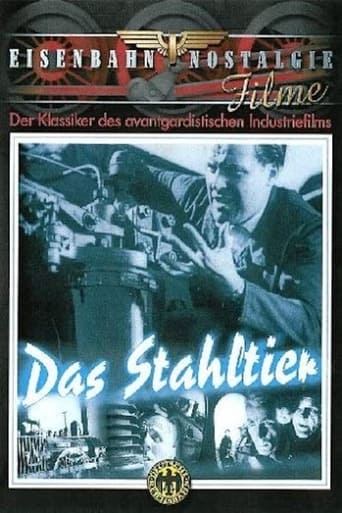cstotlar-1
This film exists in so many versions it's hard to figure out, but it is beautiful whichever form we see. The shots of wheels and wheels within wheels, gears and gears within gears are lovingly choreographed. Similar to Norman McLaren's "Pas de deux" decades later, these inner workings take a life of their own and we watch the movement not as the movement of mechanical things but as a sort of cosmic dance. No, it isn't propaganda in any way and no, it really doesn't contain a melodramatic plot with famous actors but it goes so much further. This film is well worth anybody's time! Curtis Stotlar
Mozjoukine
This Nazi (bare chested guys going "Heil Hitler") quasi documentary, by Leni Reifenstahl's cameraman, most resembles AMAZING YOUNG MEN IN THEIR FLYING MACHINES, with it's elaborate reconstructions of early machinery. Despite the fact that the British and French attempts are presented as incompetent until the German Railways showed people how, this apparently ran foul of the 3rd Reich and was suppressed. As a novelty and as entertainment the piece is not at all bad, with expert film craft and imagery, backed by a score by the composer from the Marika Rokk movies and performance and narration by the forgotten Aribert Moog from EXTASE.
OldTree
Willy Zielke has made DAS STAHLTIER (the steel animal) for the 100th anniversary of the German railway. Why wasn't it shown in 1935? Because it was no Nazi propaganda film. Okay, there's one Heil Hitler greeting, but that's all. And because Zielke tells the truth: That the steam locomotive was an English invention. To forbid this treasure of a film tells you all about the completely intolerant behavior of the Nazi regime. The story seems anything but a way to present film art: The main character (Aribert Mog) tells 5 railway workers the tale of steam and its taming in the form of historic episodes. For years I have waited to see a complete version of the film and not the crippled (and therefore illogical) thing which was available on VHS. Now I can say that the film was far ahead of its time concerning film technique. On the one hand there are many artful dissolves, ultra-fast cuts and inclined pictures, on the other hand there are these wonderful episodes, which are told in a rather calm, but all the more impressive way. The way how the replicas of the original machines has been set in motion (my favorite is the sequence with the 'Puffing Billy'; this engine was built in 1813 and is today considered as the world's first successful steam locomotive) is absolutely great, but what I admire the most is how Zielkes camera has captured all the human emotions in those many wonderful character faces. And not to forget: the music by famous composer Peter Kreuder creates always a perfect mood.DAS STAHLTIER is an incredible and unique achievement in film-making and definitely deserves the highest rating.
